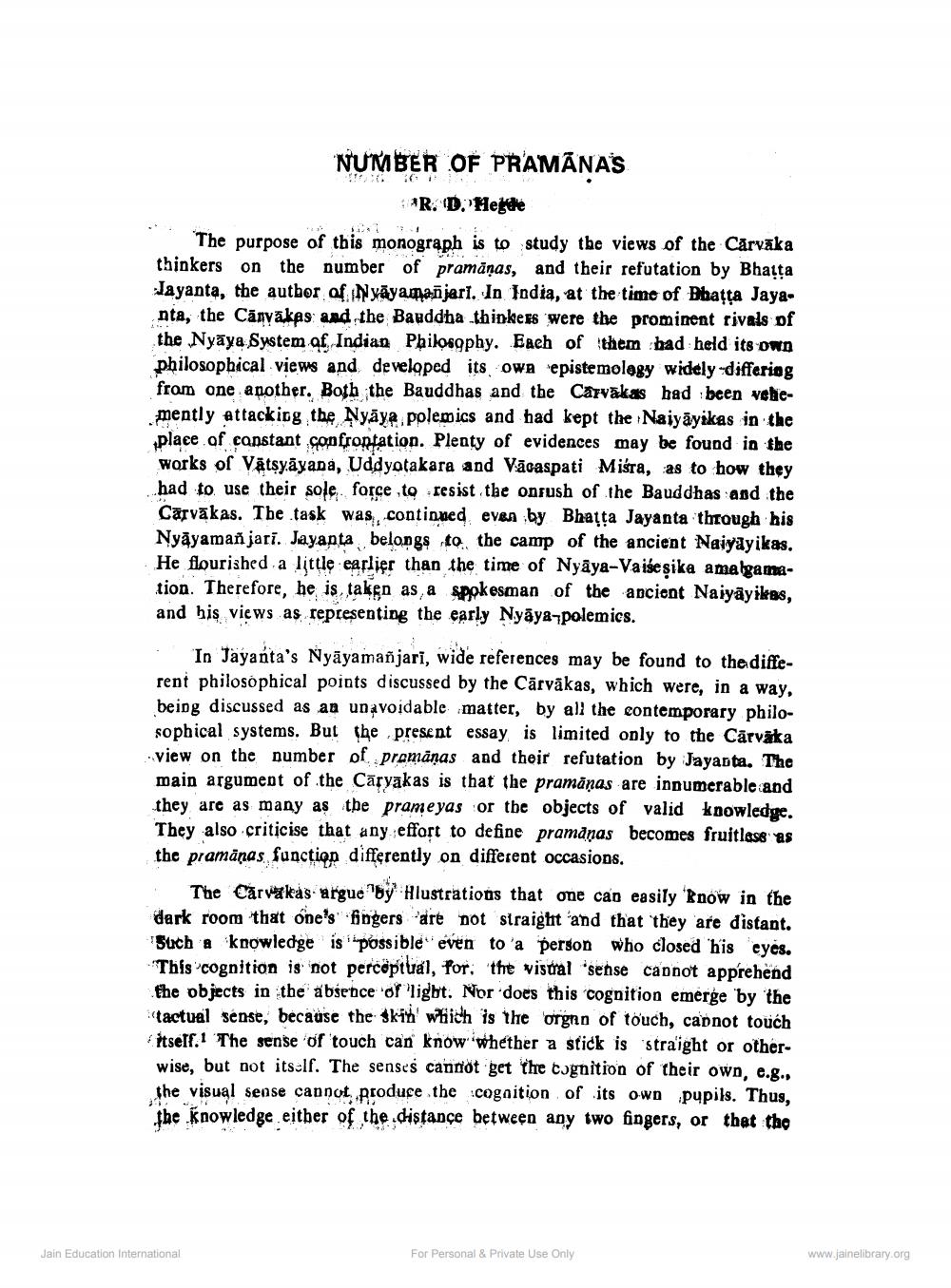________________
NUMBER OF PRAMĀNAS
*R. D. Hefde The purpose of this monograph is to study the views of the Cärvāka thinkers on the number of pramāņas, and their refutation by Bharta Jayanta, the author of Nyāyaman jari. In India, at the time of Dbațța Jayanta, the Cānvākas and the Bauddha thinkers were the prominent rivals of the Nyāya System of Indian Philosgphy. Each of them had held its own philosophical views and developed its own epistemology widely-differing from one another. Bojh the Bauddhas and the Carvakas had been vetemently attacking the Nyāya polemics and had kept the Naiyāyikas in the place of constant confrontation. Plenty of evidences may be found in the works of Vātsyāyana, Uddyotakara and Vācaspati Miśra, as to how they had to use their sole. force to resist the onrush of the Bauddhas and the Cārvākas. The task was, continued even by Bhaặta Jayanta through his Nyāyaman jari. Jayanta belongs to the camp of the ancient Naiyayikas. He flourished a little earlier than the time of Nyāya-Vaise şika amalgamation. Therefore, he is, taken as, a spokesman of the ancient Naiyāyikas, and his views as representing the early Nyāya-polemics.
In Jayanta's Nyāyamañjari, wide references may be found to the different philosophical points discussed by the Cārvākas, which were, in a way, being discussed as an unavoidable matter, by all the contemporary philosophical systems. But the present essay is limited only to the Carvãka view on the number of promänas and their refutation by Jayanta. The main argument of the Cāryakas is that the pramāņas are innumerable and they are as many as the prameyas or the objects of valid knowledge. They also criticise that any effort to define pramāṇas becomes fruitless as the pramanas function differently on different occasions.
The Cárvakás argue by Hlustrations that one can easily Bnow in the dark room that one's fingers are not straight and that they are distant. Such a knowledge is possible even to 'a person who closed his eyes. This cognition is not percoptual, for the visual sense cappot apprehend the objects in the absence of light. Nor does this cognition emerge by the tactual sense, because the skin which is the orgnn of touch, capnot touch itself.1 The sense of touch can know whether a stick is 'straight or otherwise, but not itself. The senses cannot get the cognition of their own, e.g., the visual sense cannot produce the cognition of its own pupils. Thus, the Knowledge either of the distance between any two fingers, or that the
Jain Education International
For Personal & Private Use Only
www.jainelibrary.org




